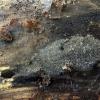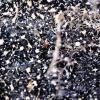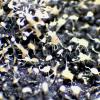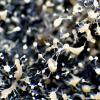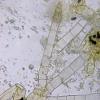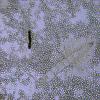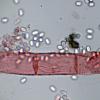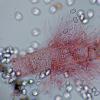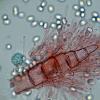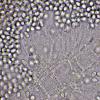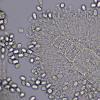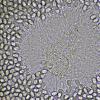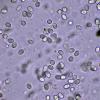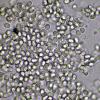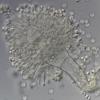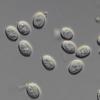
23-10-2025 20:59
Patrice TANCHAUDBonsoir, est-ce que quelqu'un posséderait un com

24-10-2025 14:50
 Riet van Oosten
Riet van Oosten
Hello, Found by Laurens van der Linde, Oct. 2025

24-10-2025 03:11
 Francois Guay
Francois Guay
I found this fungus growing on decaying conifer wo

20-10-2025 09:36
 Nicolas VAN VOOREN
Nicolas VAN VOOREN
Hello.I'm searching for the following article:Bene

21-10-2025 23:13
F. JAVIER BALDA JAUREGUIHello to everyone.Did you think it could, be a pyx

22-10-2025 14:45
Lukas VerboomDear all,I collected this in the Netherlands, on t

22-10-2025 11:13
Jean-Luc RangerBonjour, Petites boules plus ou moins sphériqu

21-10-2025 21:25
Philippe PELLICIERBonjour,J'ai récolté en septembre sur une litiè
Help with some synnemata.
Josep Torres,
12-06-2025 08:58
Some synnemata sprouting in a scattered but abundant manner on the surface of a trunk lying on the ground, an indeterminate broadleaf tree. The area was predominantly home to hazel (Corylus) and oak (Quercus), sharing the space with abundant specimens of Mollisia, probably lividofusca.
Synnemas were 0.4 to 0.5 mm tall and 0.15 to 0.30 mm wide at the fertile part, although this width is due to several synnemas joining together to form a common gelatinous mass of conidia.
Branched conidiogeneous hyphae, covered with warts over their entire surface, with a fairly uniform width of 22.5 to 24 microns. These hyphae terminate in the conidiophore, highly septate and with a pointed end. Conidia are short, cylindrical, and ellipsoidal, thick-walled, hyaline, and measure in water:
(5.4) 5.8 - 6.6 (6.9) × (3.9) 4 - 4.6 (4.8) µm
Q = (1.2) 1.4 - 1.6 ; N = 40
Me = 6.3 × 4.3 µm ; Qe = 1.5
Given their characteristics, I'm thinking of Stilbella or related genera, but I haven't been able to find any reasonably convincing proposals in the Keys.
Any feedback from you would be welcome.
Thank you in advance.
Best regards.
Adam Polhorský,
12-06-2025 14:58
Josep Torres,
12-06-2025 21:30
Re : Help with some synnemata.
Thanks, Adam, for your help.
It fits perfectly, so it looks like Gloiosphaera clerciana.
Best regards,
Josep.
It fits perfectly, so it looks like Gloiosphaera clerciana.
Best regards,
Josep.
